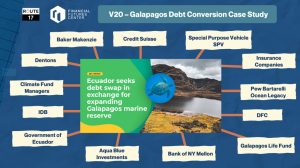Over the next few decades, India will undergo a significant energy transition to meet climate goals, with a steady reduction in the share of fossil fuels in its energy portfolio. This transition will have many different impacts, including on government revenues, investments and potential loss of fossil fuel-based assets and employment. A March 2022 study assessed the energy and fiscal impacts this transition would have across India. However, while the transition will be on a national scale, it will occur across districts, cities and states and impact each differently.
A new technical paper from researchers at the Centre for Social and Economic Progress (CSEP) and members of the Task Force on Climate, Development and the International Monetary Fund examines three key challenges that State governments in India will face during the transition away from a fossil-fuel driven economy. The authors estimate the current dependence on fossil fuels by way of State government revenues, ownership of coal power units as well as those employed by coal mining.
Key findings:
Almost all states will undergo serious fiscal stress due to a fall in the share of fossil fuel revenues. The economically better-off states, as well as those in central and eastern India, will be the most affected, as coal power units are typically concentrated there.
For 12 of the 18 states considered, coal power capacity is more than 25 percent of total capacity in the state, and a substantial part of State government-owned capacity has a lifespan of more than 30 years. It would be difficult for any cash-strapped State government to replace such capacity before their assigned lifespan without significant monetary assistance.
While coal mining employment makes up a small fraction of national employment, most coal mining jobs are concentrated in seven states and could prove problematic. This may be mitigated by the fact that those employed in mining will be retiring in the next two to three decades; however, this doesn’t not mean it will be insignificant, as indirect employment could be of serious concern.
Overall, the transition process will not be a linear, top-down process driven only by the Central government in India. Instead, it will require a series of actions at the Central government level, coordinated with State governments, in consonance with India’s power regulatory set-up and constitution.




